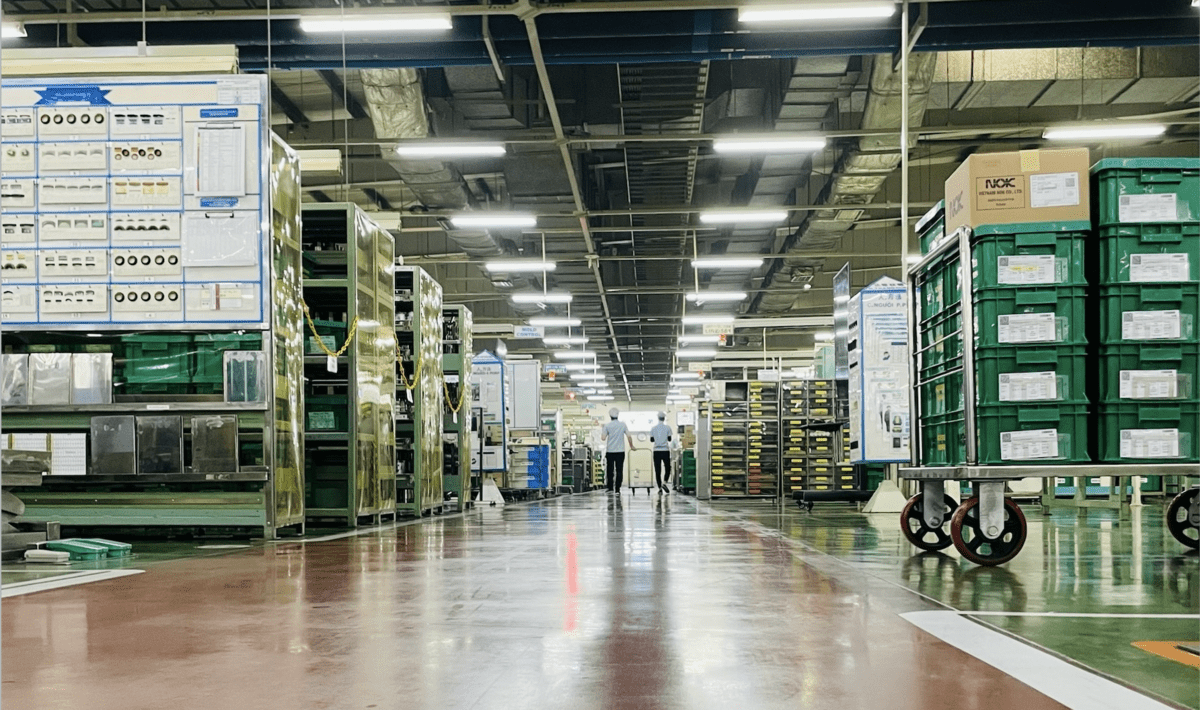
Net zero and green production are hot keywords now in Vietnam. What about NOK?
NOK is a subsidiary of the Japanese NOK Corporation. Since 2021, the corporation has been implementing a plan under which all its subsidiaries worldwide would experience the green transition.
However, the move just aimed at practicing thrift in production and making the production friendly to the living environment. After COP26, the transition has been accelerated with a roadmap for every development period.
In other words, going green was to encourage the practice of thrift in the past, but it is a must nowadays. All enterprises and clients need to organize their operations in accordance with the goal of mitigating emissions and consider going green as a business goal.
It is expected that NOK Vietnam will reduce 30 percent of its carbon emissions before we reach carbon neutrality.
NOK has been applying a series of measures to turn the goal into reality. We have shifted to renewables (in the first period, this type of clean power accounts for 20 percent of the energy the plant needs); replaced old machines with electricity-saving equipment; and increased the usability of production materials to reduce industrial waste.
We have also considered joining forces with other companies and organizations to grow green plants in areas in the province and throughout the country. This is the social responsibility we have to take.
We have a 10,000 sq m area within our campus and it has been reserved for planting to improve carbon absorption.
You have said that clients now pay high attention to emission reduction and many markets require green production. Is NOK feeling pressure from green orders?
As I have said, green transition is now a must. If you don’t go green, or if you are late in the process, you will lose great opportunities.
Clients tend to impose green requirements on products, and if we cannot provide green products, our products will become out of date and not sell.
Today, in commercial negotiations, green production is at the No1 position among the criteria your products must satisfy. At NOK, the administrative division is in charge of controlling CO2 emissions.
I myself and 4-5 co-workers attended a training course in Hanoi about green standards and regulations in carbon net emissions. I believe that in order to shift to green production, directors of other businesses also have to learn about this. At training courses, you will learn how to calculate emission reductions, and your awareness of green production will be heightened.
It is obvious that green production is a path that everyone has to follow. However, the problem is that the process will require huge financial resources. What should we do then?
It is true that emissions reduction and carbon neutrality will cost a lot of money. We not only have to replace old machines (that produce high emissions) with other machines utilizing advanced technologies and producing reduced emissions, but we also have to plan to build a rooftop solar power system to get a clean energy resource.
The process will be implemented in stages with consideration of conditions and advantages of enterprises. For example, we have a factory in Bien Hoa and Dong Nai, where there are many sunshine hours, so we decided to develop solar power there. Meanwhile, we will plant more trees to build a CO2 absorption basin. We will replace old machines and equipment with fuel saving products.
As we implement the green transition in periods, we will be able to arrange our financial capability.
Many enterprises complained about difficulties when going green. Do you have any proposals or suggestions to make the transition go smoothly?
The government of Vietnam needs a reasonable legal framework with clear provisions, standards and regulations.
After I attended a training course on taking stock of greenhouse gas emissions, I realized that it is difficult to determine the volume of CO2 emissions for each kind of input material and every production field.
Many enterprises have to hire consultants at high fees to take stock of emissions. If agencies give pre-calculated tables, enterprises can just enter their figures to find the true answers. This will help enterprises save costs.
Tam An